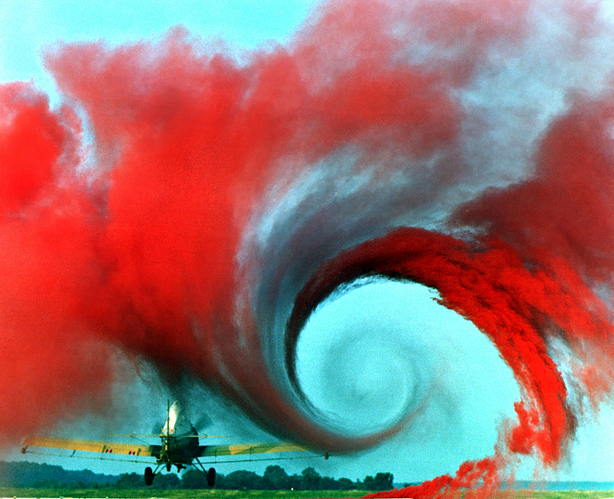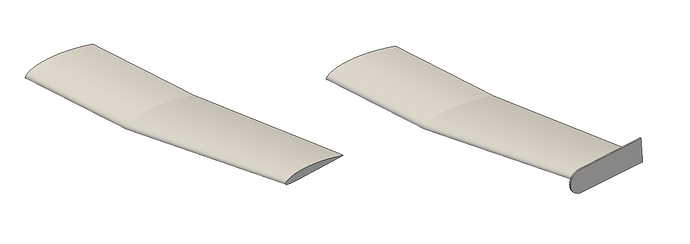NOTE: This tutorial was updated on 08/2016 to match the updated version of the platform
In this homework assignment we will review the lessons from the sixth webinar of our Drone Workshop series. You will learn how to optimize the wing of a plane by using fluid flow simulations.
Exercise:
As you can imagine, the aerodynamic properties of the airfoil have a huge impact on the overall aerodynamic performance of a plane. The pressure difference between the top and bottom side of the airfoil results in a pressure concentration at the wing tip. This increases the drag and reduced lift.
Your task is now to investigate the effect of a winglet on the wing tip. Therefore you have to set up a flow simulation for each geometry. Please simulate the aerodynamics again for an airflow velocity of 20m/s, 25m/s, 30m/s 35m/s and 40m/s. You have to create two meshes and two simulations each including five simulation runs.
Step-by-Step instruction:
First of all you have to import the geometry into your SimScale workspace. For this, you only have to click on this link and create a private copy of the project. Please note that this can take several minutes.
Since the simulation set up is quite similar to the instructions of the last session, we will not provide dedicated instructions.
Differences compared to Level 5:
- There are only two instead of three region refinements
- There is no symmetry plane necessary. Therefore all outer walls (except inlet and outlet for sure) have to be slip walls.
- Base Mesh Box
- Min. Point (x): 0
- Min. Point (y): -10
- Min. Point (z): -5
- Max. Point (x): 5
- Max. Point (y): 15
- Max. Point (z): 5
- Bounding Box Discretization:
- Number of cells in x direction: 10
- Number of cells in y direction: 40
- Number of cells in z direction: 20
- Number of processors for parallel run: 16
- Material Point
- Center (x): 2.13
- Center (y): 4.011
- Center (z): 1.017
- Cartesian Box_1
- Min. Point (x): 0
- Min. Point (y): -1
- Min. Point (z):-0.3
- Max. Point (x): 1.5
- Max. Point (y): 1
- Max. Point (z): 0.7
- Cartesian Box_2
- Min. Point (x): 0.9
- Min. Point (y): -0.2
- Min. Point (z): 0
- Max. Point (x): 1.35
- Max. Point (y): 3
- Max. Point (z): 0.45
- Surface Refinement
- Level min: 6
- Level max: 6
- Assigned Surfaces: All faces of the airfoil
- Volume Refinement
- refinement mode: inside
- refinement Level: 4
- Assigned Geometry Primitives: Both Cartesian Boxes
- Feature Refinement
- Included angle: 150
- Distance: 0.01
- Level: 8
- Layers
- Number of Layers: 5
- expansionRatio: 1.3
- finallyLayerThickness: 0.3
- minThickness: 0.015
- Assigned Surfaces: All faces of the airfoil





